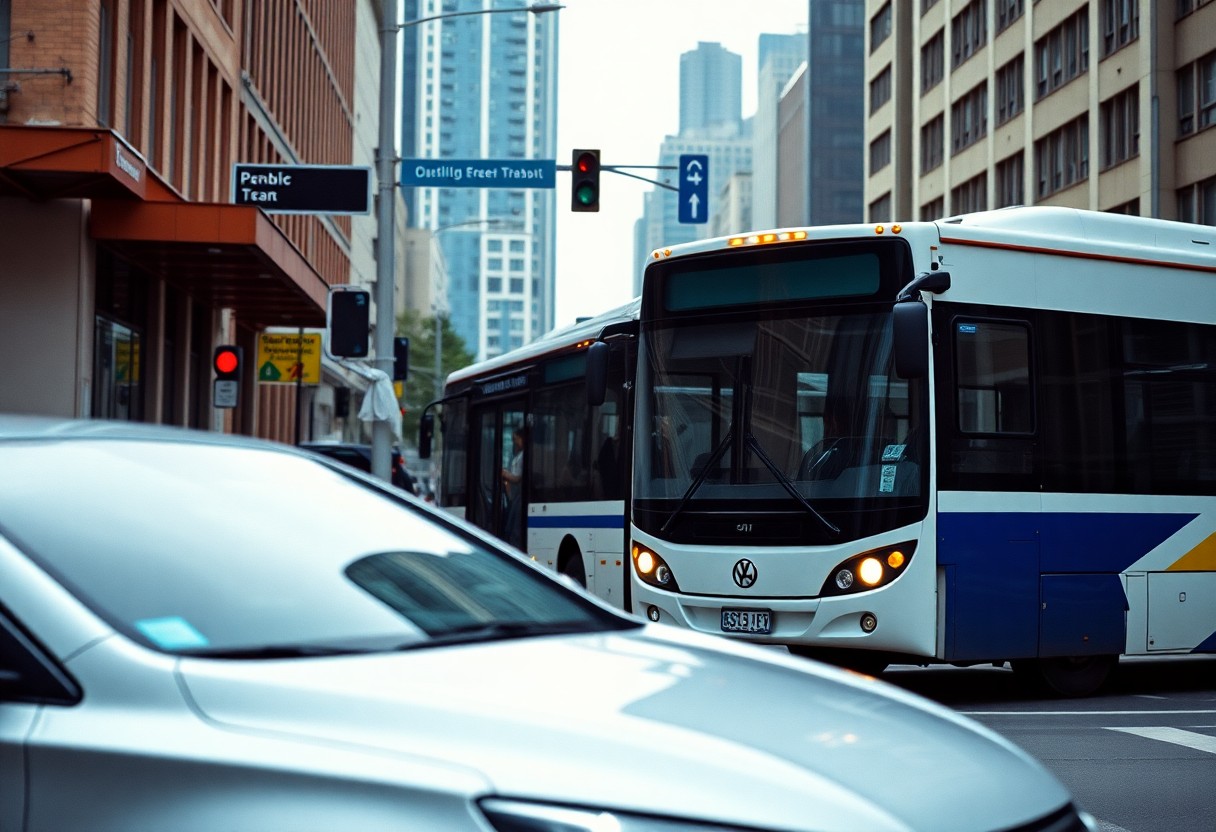As travel expenses keep rising and personal time grows increasingly valuable, choosing the best transportation method for your journey becomes essential. This decision significantly impacts both your financial budget and overall travel experience. When planning your next adventure, you’ll face the choice between the freedom offered by a rental car and the affordability of public transportation. Your decision will depend on several factors, including your travel destination, itinerary, and the number of companions. This extensive guide aims to help you navigate critical considerations, from hidden rental fees to public transport accessibility, ensuring you make an informed choice tailored to your specific travel needs.
Unlock Your Travel Potential with the Freedom of a Rental Car
The freedom that comes with renting your own vehicle opens up a world of travel possibilities. By choosing a rental car, you gain full control over your itinerary and can explore destinations that are often overlooked by traditional tourist routes. Recent studies show that 73% of travelers favor rental cars for their flexibility, allowing for spontaneous changes to their travel plans. This option is especially attractive for adventure seekers who value independence during their travels.
Weighing the Advantages and Disadvantages of Renting a Car
Once you have your rental vehicle, you’ll enjoy both newfound freedoms and certain limitations. You can explore secluded locations and alter your schedule on the fly, but it’s crucial to be aware of potential parking fees that can range from $25 to $45 daily in busy urban areas. Additionally, navigating unfamiliar roads may present some challenges. While your rental car serves as a personal retreat, you are also responsible for managing fuel costs and dealing with traffic conditions that may arise during your journey.
Uncovering Hidden Costs and Surprising Savings
Although the convenience of a rental car comes at a cost, it can also lead to unexpected savings. While initial rental rates may seem high, it’s essential to recognize that traveling in a group can often be more cost-effective than purchasing individual public transport tickets. Recent data indicates that families of four or more typically save 15-20% on transportation expenses by opting for a rental vehicle over public transit options.
Examining the financial aspects further reveals additional factors to consider. Insurance premiums can add an extra $15-30 per day to your rental costs, but many credit card companies offer rental car protection. Moreover, the fuel efficiency of modern rental fleets (averaging around 30-35 miles per gallon) can help offset overall expenses, while the convenience of direct travel saves you valuable time during your vacation.

Mastering the Urban Public Transportation Experience
If you opt for public transportation, understanding the system is your first step toward a smooth journey. Most major urban areas now offer user-friendly transit applications that facilitate route planning, real-time tracking of arrivals, and ticket purchases. Getting acquainted with the local transit network, including bus routes, subway lines, and transfer points, is vital. Research indicates that 55% of urban travelers save as much as 30 minutes per trip by utilizing transit apps, enhancing their overall travel efficiency.
Successfully Navigating the Urban Public Transit Landscape
Each city’s public transportation system comes with its unique patterns and operational quirks. Anticipate peak hours, typically occurring between 7-9 AM and 4-6 PM, when crowds are densest. Therefore, your navigation strategy should include alternative routes, as delays are common. Incorporating a buffer period of 15-20 minutes for essential appointments will help ensure you arrive punctually, even when faced with transit uncertainties.
Engaging with the Social Dynamics of Public Transit
Beyond logistical aspects, using public transportation provides a rich social experience. You’ll share your journey with locals and fellow travelers, allowing you to grasp the city’s true essence. While this can occasionally lead to uncomfortable situations, it also offers valuable cultural insights. Studies show that regular public transport users develop enhanced social adaptation skills as they navigate diverse social scenarios throughout their travels.
You may find yourself navigating various social situations on public transit, from the bustling energy of rush hour to the tranquil quiet of late-night rides. Each time of day presents its own unique atmosphere. Safety becomes increasingly important during off-peak hours, so it’s vital to remain vigilant and opt for well-lit, populated areas while waiting. Most transit systems are now equipped with 24/7 security monitoring and emergency communication systems to enhance your safety while traveling.
Assessing the Financial Aspects of Your Travel Decision
When weighing your travel options, understanding your budget is paramount when deciding between rental cars and public transit. Your transportation costs can fluctuate significantly based on your destination, trip duration, and the number of travelers. While rental cars offer greater flexibility, they also come with hidden expenses such as insurance, fuel, and parking fees. Although public transportation may seem more affordable at first glance, regular daily rides can quickly add up.
Analyzing the True Costs of Driving
A thorough financial evaluation of renting a car reveals expenses that extend beyond the daily rental fee. Be prepared to budget for $30-50 daily for insurance, average fuel costs of $40-60 per tank, and potential parking fees that can escalate to $50 per day in major cities. Consequently, your total daily travel expenses could range from $100-200, making this option especially cost-effective when traveling as a group.
Deciphering the Cost Structure of Transit Tickets
Initially, public transportation may appear to be the more budget-friendly option. In cities like New York, where average metro cards are priced at $34 for unlimited weekly rides, significant savings can be realized compared to the costs of renting a car. Additionally, you will avoid extra expenses like parking and fuel, making public transport particularly advantageous for solo travelers.
Cost comparisons reveal that weekly public transport passes in many large cities range from $25-40, offering unlimited rides. However, for families or groups of four or more, the total cost of multiple transit passes might exceed the cost of a rental car, especially when planning extensive daily travel or trips to areas with limited public transport options.

Maximizing Your Time Management During Travel
When deciding between rental cars and public transport, prioritizing your schedule is essential. A rental car facilitates direct, point-to-point travel, potentially saving you up to 40% of your travel time compared to public transportation. Your time is valuable – while public transport may seem cheaper upfront, it’s important to consider the hours spent waiting, transferring, and walking to and from stations.
Enjoy the Freedom of Flexible Scheduling with a Rental Car
Regarding time flexibility, a rental car empowers you with complete control over your departure and arrival times. You are no longer tied to rigid transit schedules, allowing for spontaneous detours or last-minute changes to your plans. This level of freedom is invaluable when your itinerary changes unexpectedly or when you discover hidden gems during your travels.
Overcoming Public Transport Timetable Challenges
One of the leading challenges associated with public transportation is the need to adhere to strict schedules. Studies indicate that 23% of urban buses fail to arrive on time during peak hours. Your journey may require multiple connections, and delays in one service can disrupt your entire day’s agenda.
To effectively navigate public transport, it’s wise to factor in additional buffer time. Transport experts recommend adding 15-20 minutes to your estimated travel time for each connection. During rush hours or special events, consider doubling these buffer times, as they can substantially impact your available time for activities.
Understanding the Environmental Impact of Your Travel Choices
When contemplating your transportation options, it’s vital to acknowledge the environmental implications of your decisions. A single-occupancy rental car emits approximately 404 grams of CO2 per mile, while public transportation can reduce emissions by up to 45% per passenger. The choice between renting a car and using public transport creates a lasting environmental footprint that deserves consideration.
Evaluating Your Carbon Footprint in Travel
Every mile you travel directly impacts climate change and environmental degradation. A fully-loaded bus can replace the need for 50 cars on the road, significantly reducing overall carbon emissions. Traveling in a rental car can produce 4-5 times more CO2 than the equivalent journey via bus or train, although choosing electric or hybrid rental options can help mitigate this environmental impact.
Exploring Sustainable Transit Alternatives for Eco-Friendly Travel
Upon reaching your destination, you’ll find various environmentally friendly transportation choices. Electric car rentals can significantly reduce your carbon footprint by up to 50% compared to traditional vehicles. Additionally, many cities are now equipped with hybrid buses and electric trams, making public transport an increasingly sustainable alternative.
Thus, your environmental impact can vary greatly based on the transportation choices you make. Consider adopting a mixed-method approach – rent an electric or hybrid vehicle for longer trips while utilizing public transport in crowded urban areas. Numerous rental agencies now offer green vehicle options, enabling you to maintain mobility while minimizing your ecological footprint.

Enhancing Your Travel Comfort Level
In contrast to public transportation, rental cars provide full control over your comfort settings. You can easily adjust the climate, seating arrangements, and audio preferences to match your personal tastes, creating a tailored travel environment. This level of customization is particularly valuable during extreme weather conditions or lengthy drives, where overall comfort can greatly influence your travel enjoyment.
Enjoying Personal Space in Rental Vehicles
One of the primary benefits of renting a car is the guaranteed personal space it offers. You won’t have to deal with crowded buses or trains where personal space often shrinks to less than 4 square feet during peak travel times. Your rental car becomes a private oasis, allowing you to maintain full control over your travel environment.
The Varied Comfort Levels on Public Transportation
Comfort levels on public transit can vary significantly due to factors beyond your control. During rush hours, you may find yourself packed in with 150-200 passengers in a single subway car, severely diminishing your comfort. The experience often requires standing for extended periods, particularly during the typical 38-minute commute in major metropolitan areas.
During a typical rush-hour scenario on public transport, noise levels can peak at around 80-90 decibels, comparable to heavy city traffic. These conditions, compounded by unpredictable delays and service interruptions, can make your journey less enjoyable and more stressful, particularly when traveling with luggage or in a group.
Choosing the Best Transportation Option for Your Unique Travel Needs
Ultimately, your choice between renting a car and using public transport should be based on your individual travel preferences and requirements. If you value flexibility and comfort while traveling with family or friends, a rental car often provides the best overall value, even with the higher upfront costs. Conversely, public transportation can be ideal for solo travelers on a budget who stick to well-established routes in urban environments. Consider factors such as your destination, group size, planned activities, and budget. By carefully evaluating these elements against your personal priorities, you can select the transportation option that best suits your travel goals.
The Article: Renting a Car vs. Public Transport: Which is Best for Your Trip? appeared first on https://rentacar24.org/
The Article Renting a Car vs. Public Transport: Choose the Best Option for You Was Found On https://limitsofstrategy.com



The decision between a rental car and public transportation is indeed one of the most pivotal when planning a trip, and you’ve captured the nuanced nature of this choice very well. Personally, I’ve found that the determining factors often shift depending on both the destination and the purpose of my travel.
You’ve hit on a crucial point. The way we choose to navigate a city or explore a new destination can really shape the entire experience. For me, the decision often hinges on a few key aspects, like how much time I have and what I want to see. Some places are just begging to be explored on foot or by local transport, while others definitely benefit from the convenience of a rental car.
You bring up a great point about how the choice between a rental car and public transportation can shift based on destination and travel purpose. It’s interesting to consider how factors like local infrastructure, cultural norms, and even the length of your stay can influence your decision. For instance, in cities with robust public transit systems, like Tokyo or London, navigating without a rental can be not only practical but also a richer cultural experience. You get to see more of the everyday life around you and often meet locals along the way.
You raise an excellent point about how the decision between a rental car and public transportation really does play a game of tug-of-war with the details of the trip—sort of like deciding whether to wear flip-flops or hiking boots for a day at the beach. Depending on your destination, one option may feel like a sun-kissed walk in the park while the other resembles a sweaty marathon in a crowded subway station.
What a thought-provoking guide! The decision between renting a car and relying on public transportation truly gets at the heart of how we choose to experience our travels. I’ve found that the choice often hinges on the unique nuances of each destination and the kind of adventure I’m seeking.
You’ve touched on something really important—how our travel choices can shape our experiences so differently. I’ve found that some destinations just feel more alive when navigating the streets by public transport. There’s something about the shared experience, connecting with locals, and getting a real sense of the culture that renting a car sometimes doesn’t allow for.